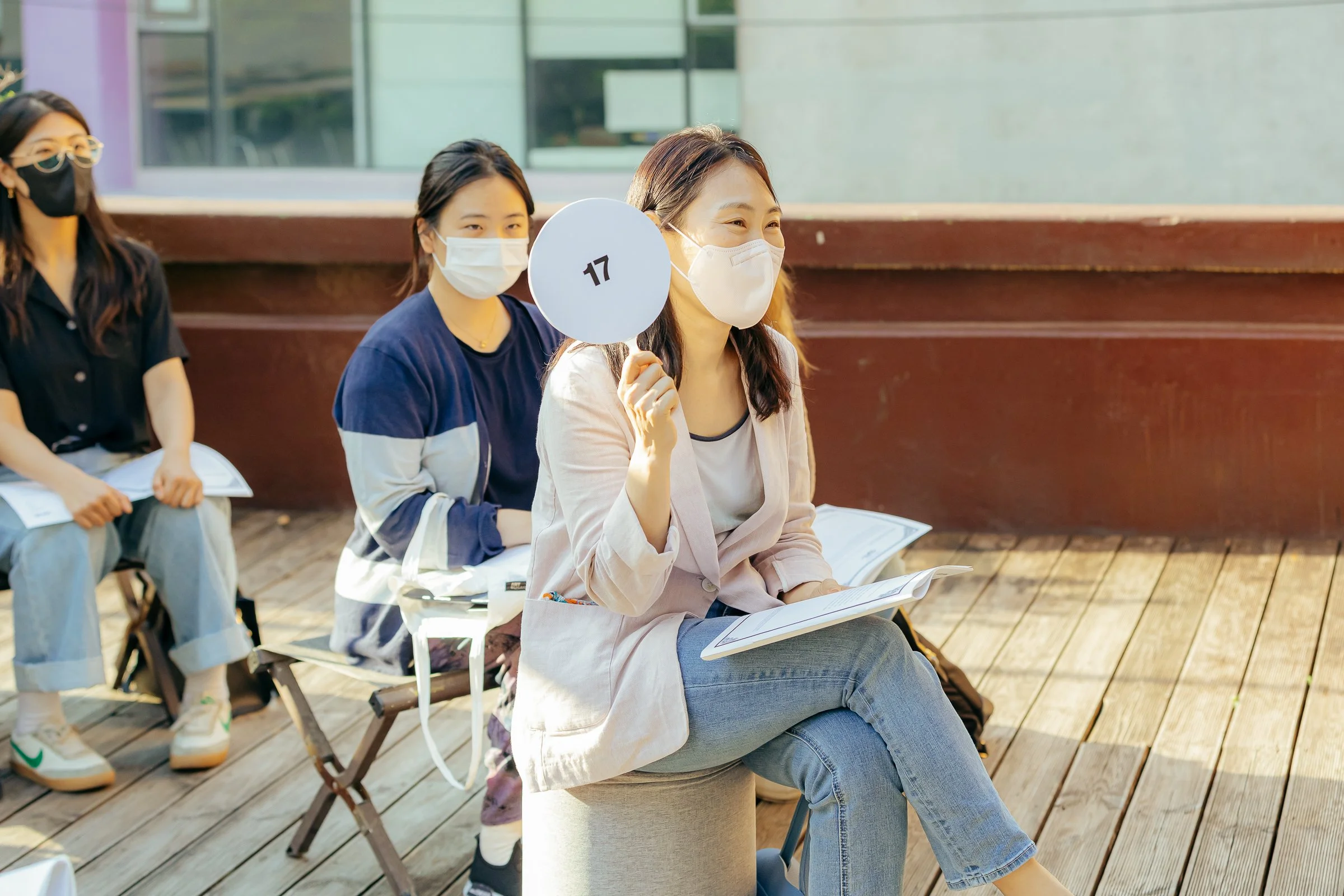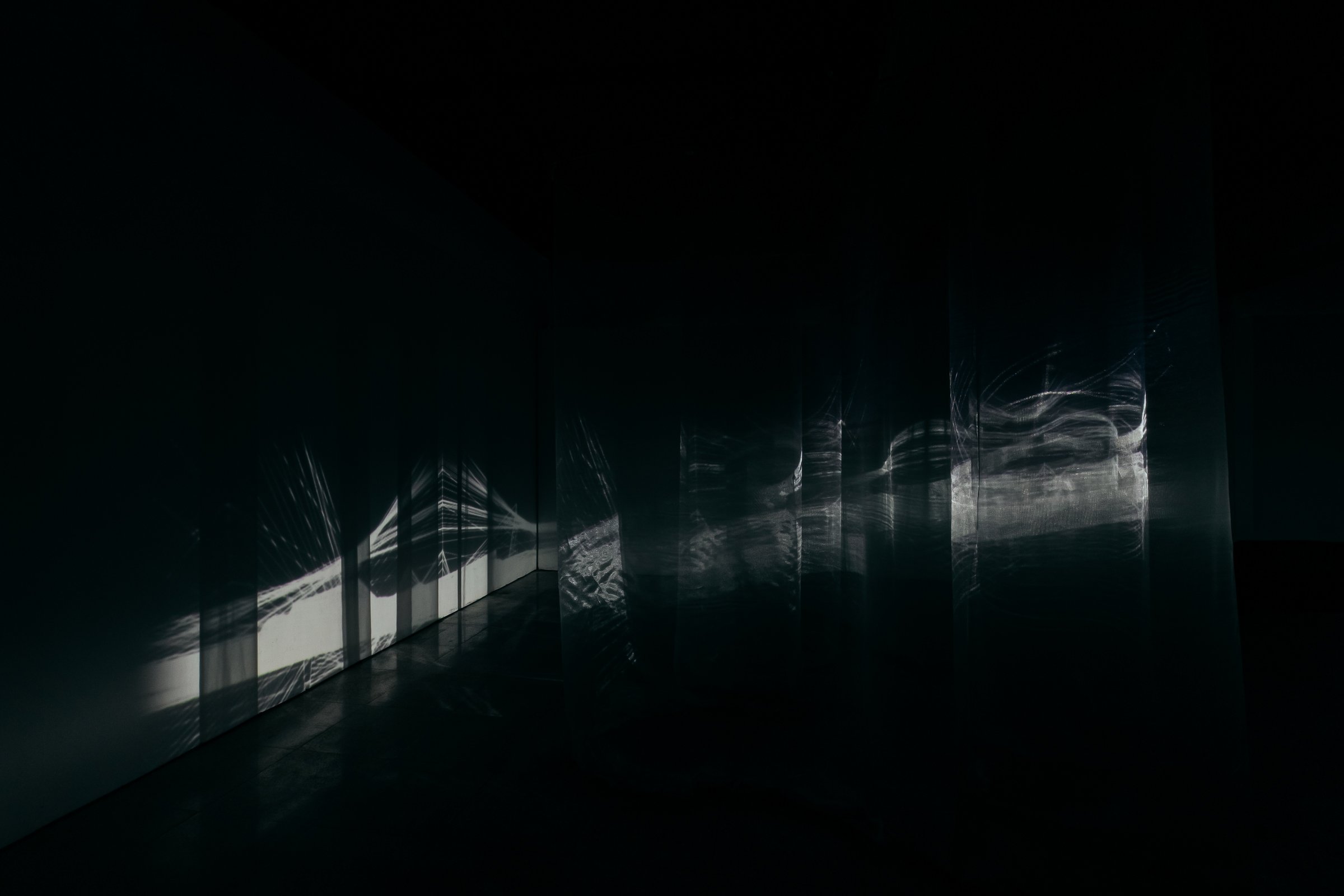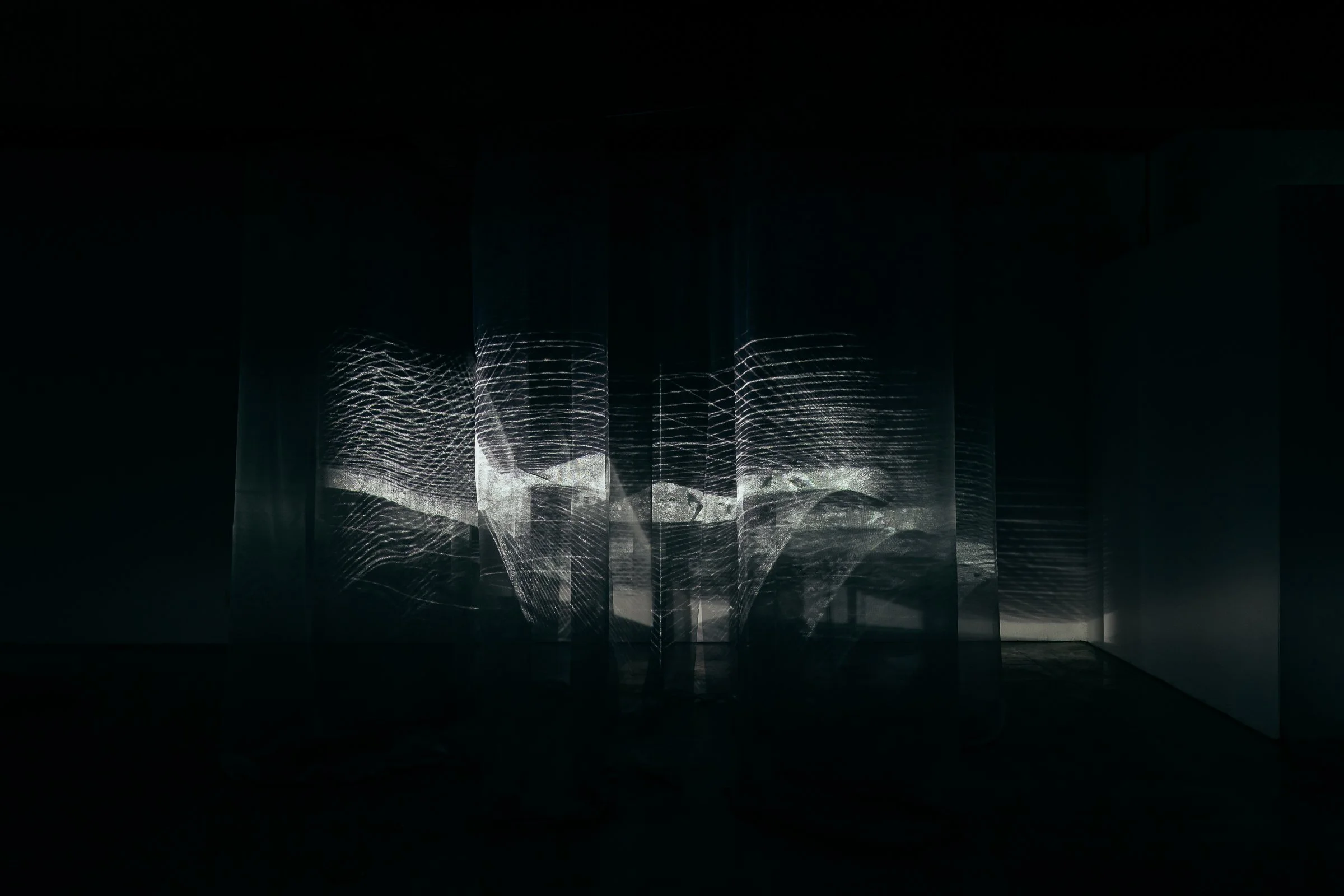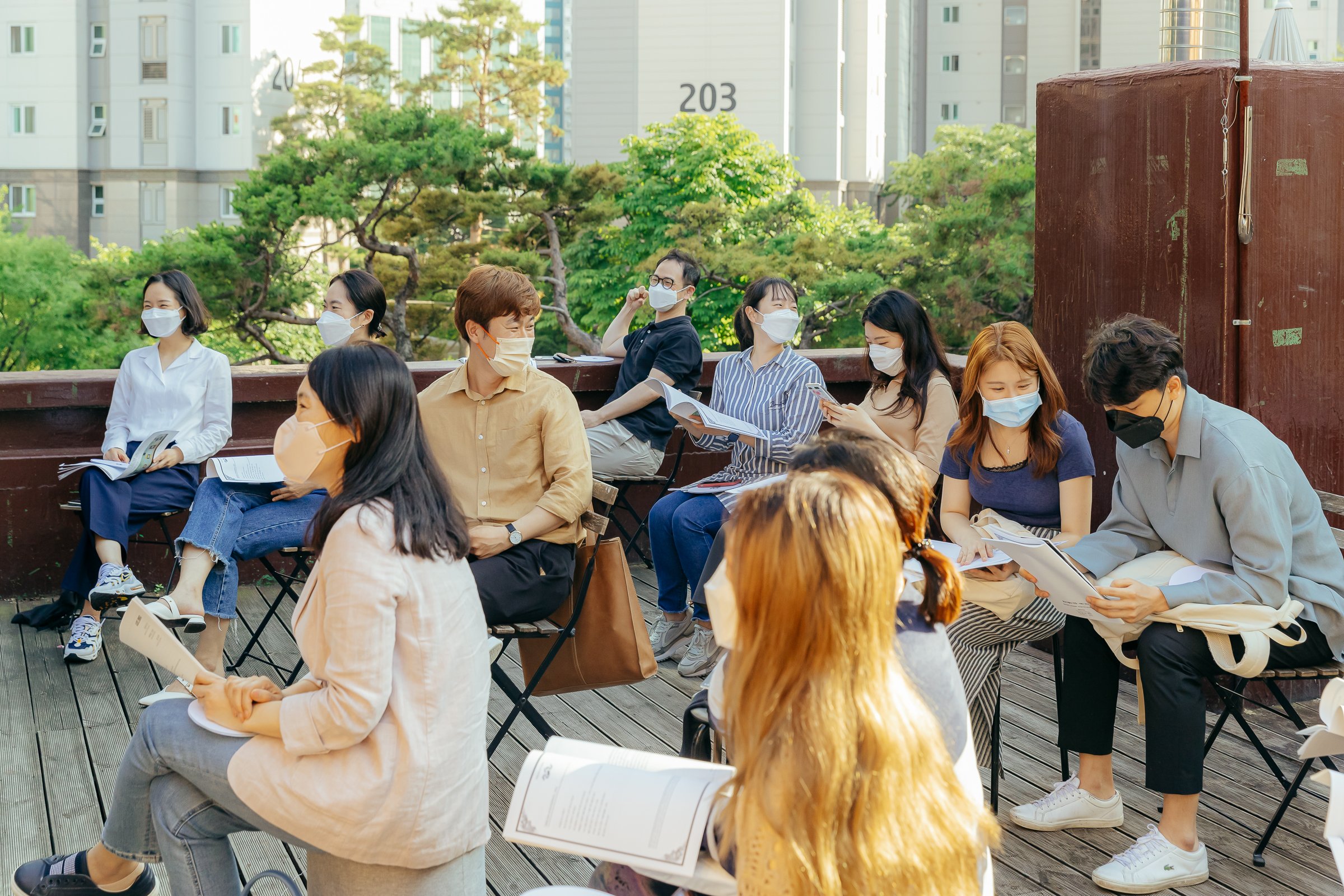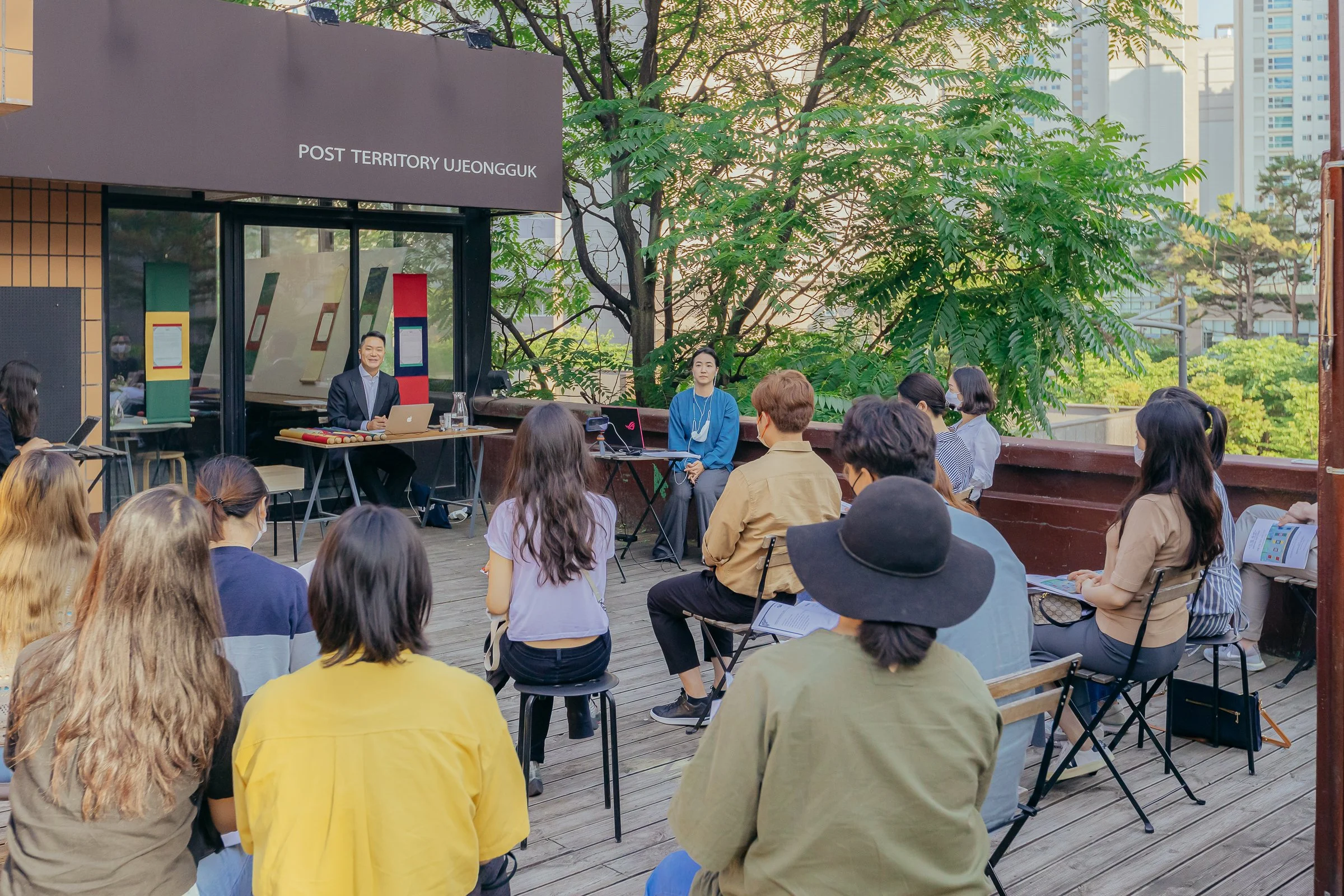July 2022
Over the past five years, London-based Korean artist Bongsu Park has been exploring the long-standing Korean tradition of buying and selling dreams in her multidisciplinary practice. This transaction involves sharing and interpreting dreams among friends and family to identify symbols that might reveal something about a person's life or future. Dreams with desirable elements might be informally "sold" to a relative or friend as a way to transfer a particular energy or internal state from one person to another.
Through immersive installations, performances and participatory experiences, Park delves into the multifaceted world of dreams as an avenue for getting closer to our innermost thoughts and feelings. She's particularly interested in examining how shedding light on our individual, interior lives might have a collective relevance. The artist speaks to Charmaine Li, a writer and initiator of ONEIRIC.SPACE, about the first time she sold a dream to a friend, dream exchanges in Korean history, what a Dream Auction entails, and how she incorporates the tradition into her works.
Charmaine Li: Can you start by speaking about when you started becoming curious about the world of dreams?
Bongsu Park: I think I've always been interested in dreams and loved talking about them. When I was six, I remember talking to a friend about how we dreamt differently. The colours and characters in my dreams felt like animations, and when I asked others about that, no one seemed to dream that way. Oftentimes, rather than having a first-person view in my dreams, I would have an omniscient view. It would be like I was reading every character's emotion. And if I attached myself to one specific character during the dream, it felt like I had become that character even though it wasn't me.
CL: It's so fascinating to hear how the dream world can open us up to this transdimensional way of being. Dream Auction is an overarching project that consists of a series of works that examine the Korean tradition of "buying and selling dreams.” I’d be curious to hear about the first time you came across this tradition? Was this kind of dream exchange something you observed in your day-to-day life while growing up?
BP: I started developing the idea for this project about five years ago around the time I sold a dream for the first time to a friend who's also Korean and lives in London. We met for cake and coffee at a restaurant, and during our conversation I happened to talk about the dream I had from the night before where I was eating a blueberry that was the size of a tomato. She was like, “Oh my god, I need to buy your dream.” Even though I was aware of the concept of buying and selling dreams because I had seen this practice in Korean TV dramas and period films, I never thought about participating in it, nor ever had the chance to sell any of my dreams.
So when my friend brought this up, I asked why she wanted to buy my dream. She said she was trying to have a baby and believed my dream could give her a daughter [laughs]. In Korea, there's special attention paid to conception dreams. Some people believe that if someone close to you dreams of eating or grabbing fruit, it can hint that you’re having a daughter. Whereas if a small animal or dragon is jumping at you, it can be a sign that you'll have a boy. My friend saw my dream as an auspicious one and wanted to pay me for it, but I told her she could just pay for our cake and coffee instead. In Korea, if you take part in this kind of transaction, it's said that both sides should agree and be happy about it.
Two months later, she called to tell me that she was pregnant. And now she has a beautiful daughter. I tried to talk about this experience with my English husband and he didn't really understand. I also couldn't wrap my head around it or explain what had happened so I went to the British Library to look into where this Korean tradition comes from. I found some references to this practice in written historical records from the sixth century and then discovered similar stories in the Goryeo Dynasty. So I thought, “I have to develop this further in my practice.” That's when I started Dream Auction.
CL: And that's when you discovered the Samguk Sagi (History of The Three Kingdoms), a 12-century text considered the oldest official chronicle of Korean history, that has informed several of your works. Can you tell us a bit more about what it covers and why you were so drawn to it?
BP: The text contains some of the earliest tales of dream transactions in Korean history. In it, there is a story about two sisters, Munhui and Bohui, and the well-known King Muyeol of Silla, who is credited for uniting the three kingdoms of Korea. One night, Bohui had a dream where she was at the top of a mountain that looked out onto the capital of Silla when she started to pee and the urine covered the city below. When Bohui woke up, she told this dream to her younger sister, Munhui, who found the dream interesting and wanted to buy the dream. Munhui gave Bohui a silk skirt in exchange for the dream. Later, the two sisters meet Kim Chun-Chu, who eventually became the King of Muyeol of Silla. Instead of the older sister marrying him, which was typical at the time, Munhui, the younger sister, got married to him and bore him sons who also became kings.
While researching this story, I came across a study that analyzed the psychology of both sisters when this dream exchange happened. It stated that if the older sister didn't want to give the dream to the younger sister, the transaction wouldn't have happened so it seemed like a way for Bohui to encourage her younger sister and give her luck. When I discovered this, I was really happy because when I sold my dream to my friend I had a similar feeling. I didn't feel like I should have kept that dream so I could have a baby myself. I felt that if this dream could give her encouragement of some kind then I'm happy to sell it to her. I also thought that this Korean tradition was a great way to talk about dreams and I wanted to share this practice with others.
CL: As part of Dream Auction, you invite the public to submit dreams through a Google Form on your website and specifically state, “Please contribute your dream with care. It is a transfer of energy in good faith, an act of friendly generosity.” Can you elaborate on why sharing a dream can be a transfer of energy?
BP: I added that line in because I wanted people to experience the Korean tradition for themselves and hoped that people wouldn't make up dreams to submit or take the project as a joke. In Korea, people who buy and sell dreams believe that certain dreams have an auspicious omen and this energy can be transferred through the transaction. I don't necessarily believe all the superstitions about dreams in Korean culture – that's not why I started Dream Auction – but I think the tradition is an interesting way to share dreams and discuss them. Dreams are an important tool for us to learn about ourselves and I don't think we talk about them enough. It's also interesting to consider how cultural differences influence the way people think about and discuss dreams.
CL: The dream fragments you collect through your website and workshops are often then incorporated into your other works. For example, in Dream Ritual, which premiered in 2019 at The Coronet Theatre in London, you collaborated with dancer and movement artist Jinyeob Cha to create a multimedia performance that explored sleep and the subconscious by combining visual projections of collected dream phrases, electronic music and dance. What did your process look like in terms of selecting the dream words and phrases for the performance?
Dream Incubator (2021) by Bongsu Park, installation with two-channel video of REM brainwave visualisations, courtesy of Bongsu Park
Dream Incubator (2021) by Bongsu Park, installation with two-channel video of REM brainwave visualisations, courtesy of Bongsu Park
BP: Dream Ritual is a dance journey through the stages of sleep during several sleep cycles. It starts with a projection of the main character's face with closed eyes, falling asleep, and then follows her as she falls deeper into the subconscious. The story is about Munhui, performed by Jinyeob Cha, who becomes a shaman that travels into the collective unconscious, encounters the dreams of others and then brings them somewhere good. In terms of selecting dreams words and phrases to include for this narrative, it was a natural process that felt similar to choosing colors for a painting.
CL: Oftentimes, your exhibitions are accompanied by workshops where you invite participants to share their dreams through storytelling exercises. How do you structure the workshop so people feel comfortable sharing their dreams, which can be such an intimate act?
BP: In preparation for Dream Ritual, I led workshops at the Korean Culture Centre in London as well as the Wellcome Collection. It's a way for me to get the general public involved in dream-sharing and discussions on the topic. During these workshops, I lead storytelling exercises and introduce them to Korean dream culture. For example, there's an exercise I do where I create stickers with keywords of common dreams, such as “falling,” “house,” or “fire,” and then put these stickers on a table. Then I'll ask participants to put on the stickers of dreams they've had before. It's a sort of trigger for them to think about dreams they've had before. I'll also talk a bit about dreams in Korean history and ask people to talk about their relationship to dreams or how dreams are seen in their culture. At the end of the workshop, participants leave a dream narrative in text form that is logged and might be introduced in my other works.
CL: The Dream Auction event is a staged auction where dreams you’ve collected are printed onto scrolls and then sold at a temporary marketplace of sorts. What were you thinking about when you conceived of this performance?
BP: I've always wanted to create a dream auction event but it took me four years to figure out how to present the dreams in this format – whether the dreams should be shown through text, audio, paintings or pottery. Eventually, I decided on a dream scroll because I wanted to connect the event to Korean culture somehow and only highly regarded documents are written into scrolls in Korea. The first Dream Auction event was performed during my exhibition in Seoul, which was funded by the Seoul Foundation for Arts and Culture, and that was a good opportunity for me to observe how Korean people received this kind of event. Even for Koreans, who are used to buying and selling dreams, holding an auction for dreams at an art event was an unusual concept because normally sharing dreams is something you do with family and friends.
Overall, people who joined the Dream Auction seemed to enjoy the experience of encountering a stranger's dream and were happy to pay a sum of money for the transaction. In Seoul, all profits were donated to the Miral Welfare Foundation and in London a percentage of raised profits were donated to the charity Entelechy Arts. I thought it appropriate that a project made of dreams could enable others to pursue their own dreams in life.
Dream Auction at Post Territory Ujeongguk in Seoul (2021) during Bongsu Park’s solo exhibition 'Dreamers’ Gathering', courtesy of Bongsu Park
Dream Auction at Post Territory Ujeongguk in Seoul (2021) during Bongsu Park’s solo exhibition 'Dreamers’ Gathering', courtesy of Bongsu Park
CL: How did the responses to the Dream Auction event in Seoul compared to the ones in London?
BP: It was quite different. In Korea, people were very serious about the dream narrative, which makes sense since many believe that it's a transfer of energy. It was interesting to see that all of the dreams were sold except for one about war. Despite the reference to war, I listed the dream because the problems in it are eventually solved in a positive way, in my opinion. But I think the mention of war made people not want to buy the dream at all. Not only that, in Korea, participants were also very competitive in bidding for dreams that seemed auspicious, like ones that contained symbols of fire, for instance. Whereas in London, participants were less competitive and focused on the quality of the dream text, like how poetic it was. People in London really enjoyed the event but I think it wasn’t as competitive as in Seoul. Most of the dreams went to the first bidder. It seemed to be more experience-based for them.
CL: As part of the ‘Social Matters through Dream Sharing’ project that took place in 2021, you participated in some social dreaming matrices at the Tavistock Institute. The practice of social dreaming involves sharing dreams within a group and freely making associations to discover what links our dreams to each other's dreams and to a broader social context. I’m interested in hearing more about those experiences. Did engaging dreams in a group setting shift the way you view dreams at all?
BP: For me, dreams have always been a personal, private playground, especially with lucid dreaming where there's a lot of freedom in creating your own scenes and narratives. With the social dreaming matrices, I discovered how my dreams can connect with other people's dreams. It was fascinating to hear the different kinds of associations that participants would make with a certain dream. In the social dreaming matrix, a dream doesn't belong to anyone. We focus on the dream in the context of the group we're in and in the society we're living in. It made me think about how dreams can reflect upon something beyond our own personal narratives.
Bongsu Park is a London-based Korean artist. Her recent work is founded on how our innermost thoughts may connect with other people’s and how these can be shared publicly. Bongsu has developed an ongoing practice exploring Korean dream culture since 2017 including Dream Ritual at The Coronet Theatre in London(2019), Dreamers’ Gathering and Dream Auction at Post Territory Ujeongguk in Seoul (2021) and Social Matters through Dream Sharing with The Tavistock Institute in London(2021).
Charmaine Li is a Toronto-born writer based in Berlin. She mostly covers art, design and tech, with a keen interest in investigating our relationship to uncertainty, the unknown and the mysterious interconnectedness of the world. She initiated ONEIRIC.SPACE, a research vessel exploring how dreams intertwine with our waking lives and futures. Her writing appears in C Magazine, Newsweek, mono.kultur, DAZED and Atmos, among other publications.

